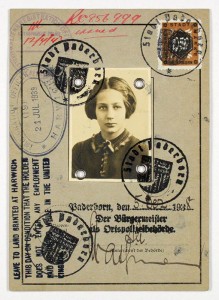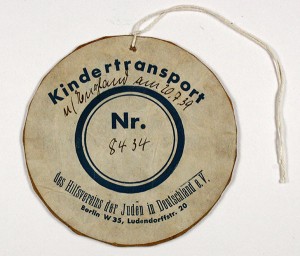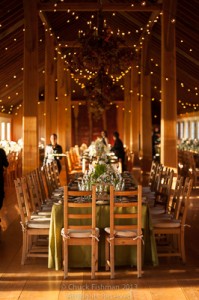
Beate Rose’s childhood passport
© Jewish Museum Berlin, donated by Beatrice Steinberg
75 years ago today, on 2 December 1938, the first of the Kindertransport rescue missions arrived in England. Beatrice Steinberg (née Beate Rose), a benefactor of the Jewish Museum Berlin, was among the last of the Jewish children to be saved in this way, by mass evacuation from Nazi-occupied territories. In her memoirs, which are held in our archives, she recalls her departure from Germany in the summer of 1939:
“My mother took me to the train, which turned out to be one of the last Kindertransporte to England […]. I was so excited that I rushed up the station steps without even saying goodbye to my mother. She called me back. We gave each other a hug and a kiss, then I boarded the train. I stood at the window and we waved goodbye. That was the last time I ever saw her.”

Beate Rose’s number tag from the “Kindertransport” rescue mission
© Jewish Museum Berlin, donated by Beatrice Steinberg
For Beatrice, only twelve years old at the time, the trip was an adventure; for her parents, the decision to let her go off alone, into the unknown, must have been made in great despair. The mass evacuation of children was launched three weeks after the November pogrom. Beate’s father was a prisoner in Buchenwald concentration camp at the time. Like hundreds of thousands of Jewish men and women, her parents hoped to leave Germany as soon as possible. But which country would open its borders to the mass of refugees? Visa restrictions and a bewildering amount of red tape made emigration a protracted and arduous undertaking. → continue reading
Menurkeys for Thanksgivukkah?

Research under way in preparation for Thanksgivukkah
Photo: Signe Rossbach
Chanksgiving! As a family of German-American Jewish-Protestant-Catholic-Puritan backgrounds, we do like to celebrate as many holidays as we can possibly fit into our family schedule – with Halloween, our twins’ birthday and the classic German lantern parade for St. Martin’s day making for an action packed twelve days at the beginning of November.
After a bit of a breather we’re heading into the next holiday season – with a bit of a twist this year. Usually Hanukkah – the Jewish festival of lights and miracles – is associated with the Christian festival of lights and a miraculous birth: Christmas. And that makes sense, sort of, superficially at least. A few years ago we had an entire exhibition titled “Chrismukkah” – a cultural history of the evolution of the two holidays, and this year on December 3, Rabbi Daniel Katz will present a truly enjoyable talk on how they really don’t fit together at all.
But Thanksgiving? → continue reading

The wedding barn decorated with lights and flowers
© Chuck Fishman
With young adults spending an increasing number of years out of wedlock, preparation for marriage is ever more elaborate: Bachelor and bachelorette parties in North America are notorious for distracting brides- and grooms-to-be with alcohol and promiscuity. Celebrations of a similar nature are called stag and hen nights in England. In traditional German circles, friends and relatives of wedding couples smash dishes on so-called Polterabend (English: rowdy evening). In modern ones, the couple and their friends careen through city streets with flashy paraphernalia, printed t-shirts, and plastic trumpets.
Currently, a group of young Jews in the US are adapting an eastern European pre-marriage tradition, called tisch (Yiddish: table, short for chosson’s tisch, or groom’s table). → continue reading



